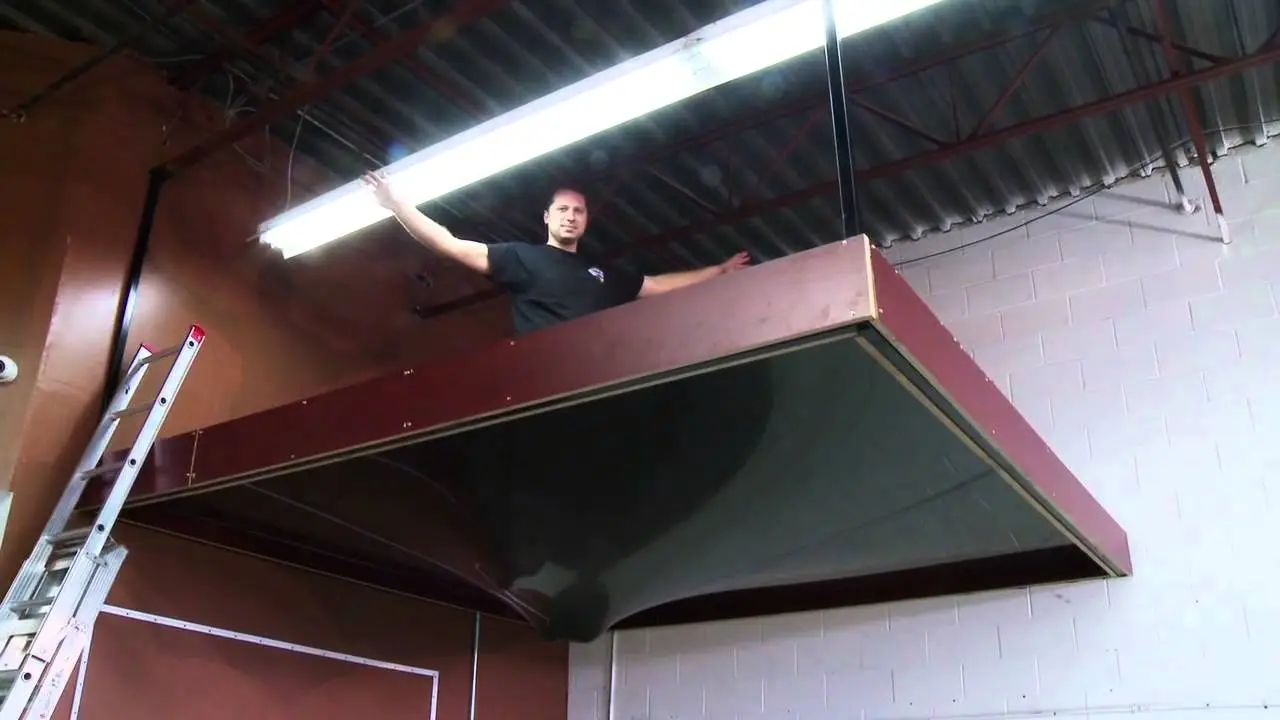

Introduction
A basement ceiling can make or break the aesthetic of your basement. A well-designed ceiling can add a finishing touch to your space and improve the overall functionality of your basement. We will explore the different options available for basement ceilings and the benefits of each.
Why Basement ceiling development with professionals?
Basement ceiling development is a complex task that requires expertise and experience. There are many reasons why it is important to hire professionals for this task.
Professionals have the necessary skills and knowledge to ensure that the ceiling is installed correctly and safely. They are trained in the proper installation techniques and can ensure that the ceiling is secure and will not collapse or cause any other safety issues. They have access to the right tools and equipment to complete the job efficiently. They have specialized equipment that allows them to work quickly and effectively, without causing damage to your property. Professionals have the necessary experience to troubleshoot any issues that may arise during the installation process. They can identify potential problems before they occur and can take steps to prevent them from becoming bigger issues.
Finally, hiring professionals for basement ceiling development can save you time and money in the long run. They can complete the job in a timely and efficient manner, which means that you won’t have to spend as much time or money on repairs or maintenance in the future.
Types of Basement Ceilings
Suspended Ceiling
A suspended ceiling is a popular option for basements because it is easy to install and access the wiring and plumbing that may be hidden behind the ceiling. Suspended ceilings consist of a metal grid system that supports ceiling tiles. The tiles are available in a variety of materials and designs to fit any decor style.
Drywall Ceiling
Drywall is another common option for basement ceilings. It is a more permanent solution than a suspended ceiling and can provide a more polished look. However, drywall installation requires a skilled professional as it can be challenging to install in a basement due to moisture and uneven surfaces.

Your Dream Basement Projects starts from here : Ignite your options with our complementary quotation
Benefits of a Basement Ceiling
Planning
Planning is the most crucial stage in any construction or renovation project. A proper plan helps to ensure that the basement ceiling project is successful and meets all your expectations. Here are some key considerations when planning your basement ceiling project:
Determine the purpose of the space
Before you start planning, determine the purpose of the space. Do you want to use the basement as an entertainment area, a storage area, or a living space? This will help you determine the type of ceiling that would be most appropriate.
Identify any obstacles
Identify any obstacles that might affect the installation process. Obstacles like pipes, ductwork, or wiring may need to be relocated or adjusted before installation.
Set a budget
Determine your budget for the project and stick to it. Be sure to factor in the cost of materials, labor, and any additional expenses.
Consult with professionals
Consult with professionals to ensure that your plan is feasible. A professional contractor can provide you with valuable insights and recommendations based on their experience and expertise.
Basement Finishing Cost Calculator
Designing
Once you have a plan in place, the next step is designing your basement ceiling. A well-designed basement ceiling can add character and value to your home. Here are some factors to consider when designing your basement ceiling:
Ceiling height
Determine the ceiling height you want to achieve. A lower ceiling can make a space feel cozy, while a higher ceiling can make a space feel more spacious.
Lighting
Lighting is an essential element of any ceiling design. Determine the type of lighting you want to use, such as recessed lighting or track lighting.
Materials
Choose materials that are durable and suitable for the intended purpose of the space. Consider materials such as drywall, tiles, or suspended ceilings.
Style
Consider the style of your home when designing your basement ceiling. Choose a style that complements the rest of your home and adds value to your property.
Execution
Once you have a plan and design in place, the next step is executing the project. The execution stage involves the actual installation of the basement ceiling. Here are some essential elements to consider during the execution stage:

Choose a Reliable Contractor
Choosing a reliable and experienced contractor will ensure that the project is executed correctly and on time.

Obtain Necessary Permits
Obtain any necessary permits before beginning the project. Failure to obtain the necessary permits can result in legal issues and fines.

Ensure Proper Installation
Ensure that the installation is done correctly, with proper insulation and ventilation.

Quality Check
Quality control involves ensuring that the project meets all the necessary standards and requirements.

Inspect the Ceiling
Inspect the ceiling to ensure that it has been installed correctly and meets all the necessary requirements.

Check for Any Defects
Check for any defects such as cracks or unevenness in the ceiling.

Final Walk-Through
Conduct a final walk-through with your contractor to ensure that all work has been completed satisfactorily.

Test the Lighting
Test the lighting to ensure that it is functioning correctly.
Maintenance of Basement Ceiling

Your Dream Basement Projects starts from here : Ignite your options with our complementary quotation
Maintaining the basement ceiling is an essential part of keeping the entire basement area in good condition. With proper maintenance, you can ensure that the ceiling remains in excellent condition and does not develop any issues that could lead to costly repairs down the line. Here are some maintenance tips to keep your basement ceiling in top shape:
Final Note
A basement ceiling plays a crucial role in the overall aesthetic and functionality of your basement. Hiring professionals for basement ceiling development is essential due to their expertise, skills, and access to proper tools and equipment. Different types of basement ceilings, such as suspended ceilings, drywall ceilings, beadboard ceilings, and metal ceilings, offer various benefits and design options. A well-designed basement ceiling can enhance soundproofing, conceal unsightly elements, improve insulation, and contribute to the overall aesthetic appeal of the space. Planning, designing, executing, and maintaining the basement ceiling are important stages that require careful consideration, consultation with professionals, and adherence to quality control measures.
FAQs
What are the different types of basement ceilings?
The different types of basement ceilings include suspended ceilings, drywall ceilings, beadboard ceilings, and metal ceilings.
Why should I hire professionals for basement ceiling development?
Hiring professionals ensures proper installation, safety, efficient completion of the project, access to specialized tools, and expertise in troubleshooting any issues that may arise.
What are the benefits of a basement ceiling?
A basement ceiling provides soundproofing, conceals unsightly elements, improves insulation, and enhances the overall aesthetic appeal of the space.
How should I plan for a basement ceiling project?
Determine the purpose of the space, identify any obstacles, set a budget, consult with professionals, and consider factors such as ceiling height, lighting, materials, and style
How can I design my basement ceiling?
Consider factors such as ceiling height, lighting options, suitable materials, and a style that complements the rest of your home.
What should I consider during the execution stage of a basement ceiling project?
Choose a reliable contractor, obtain necessary permits, ensure proper installation with insulation and ventilation, and conduct quality control checks.
How can I maintain my basement ceiling?
Regularly clean the ceiling, repair any damage promptly, check for moisture and mold, and consider hiring a professional for maintenance tasks if needed
What are some common maintenance tips for basement ceilings?
Regular cleaning, addressing any damage promptly, checking for moisture and mold, and seeking professional assistance when necessary.
How can I prevent mold growth in my basement ceiling?
Regularly inspect the ceiling for any signs of mold or mildew, address any moisture issues promptly, and ensure proper ventilation in the basement.
Can I install a basement ceiling myself?
While it is possible to install a basement ceiling yourself, it is recommended to hire professionals for a proper and efficient installation, especially for more complex ceiling types like drywall ceilings.
